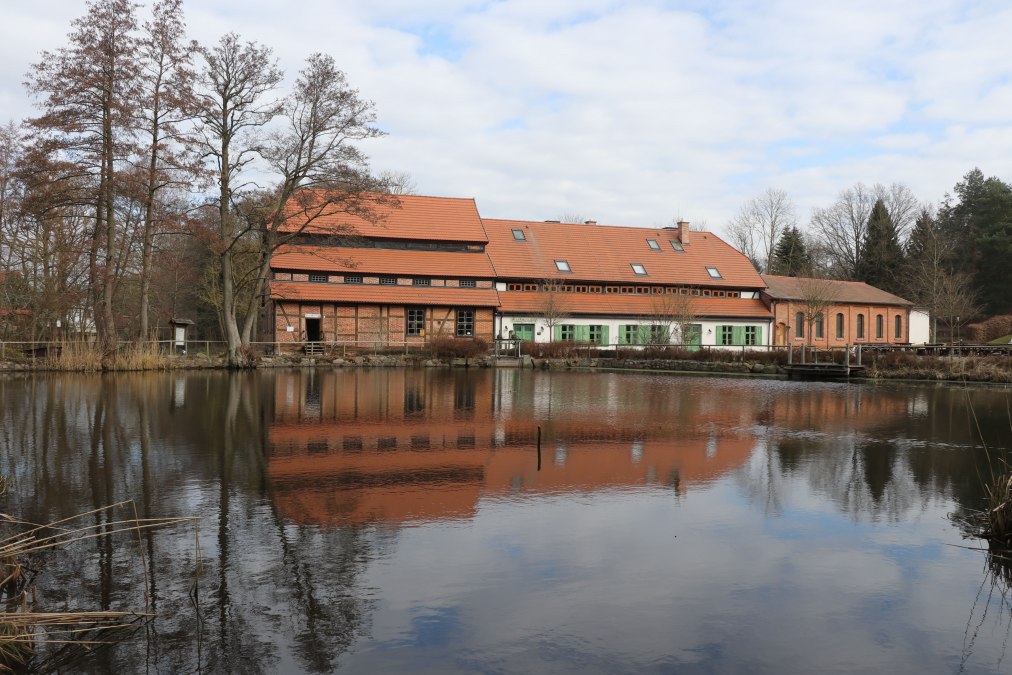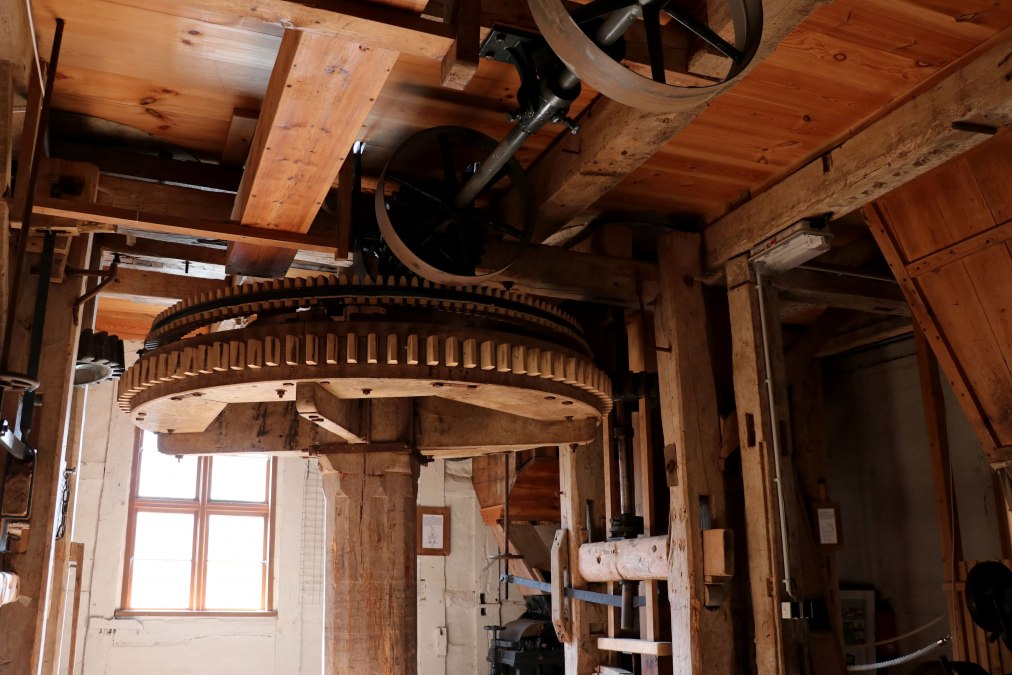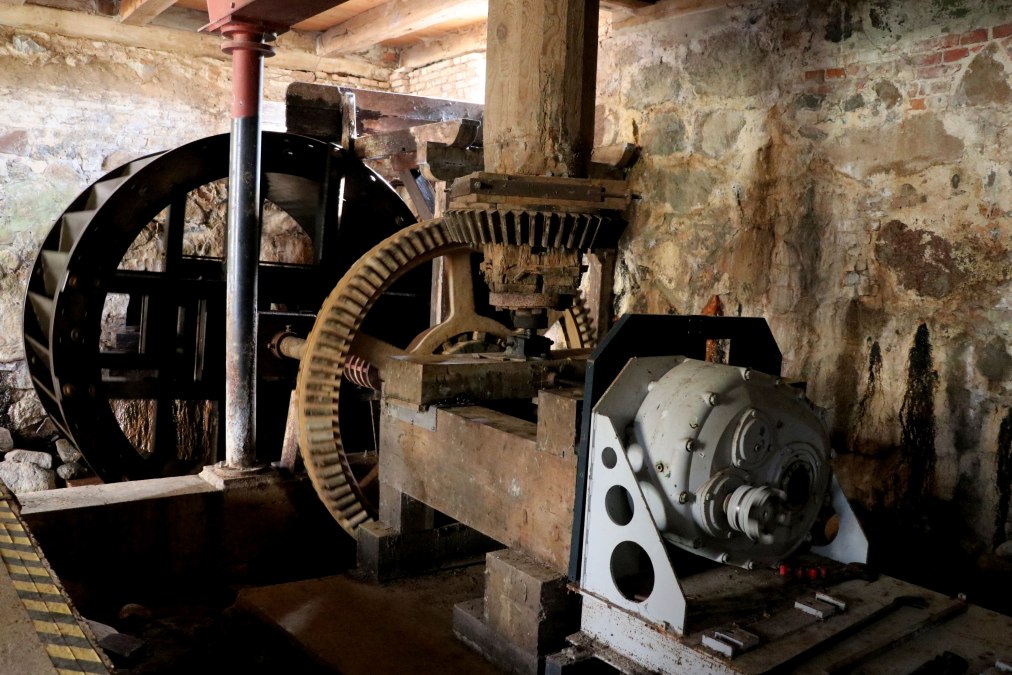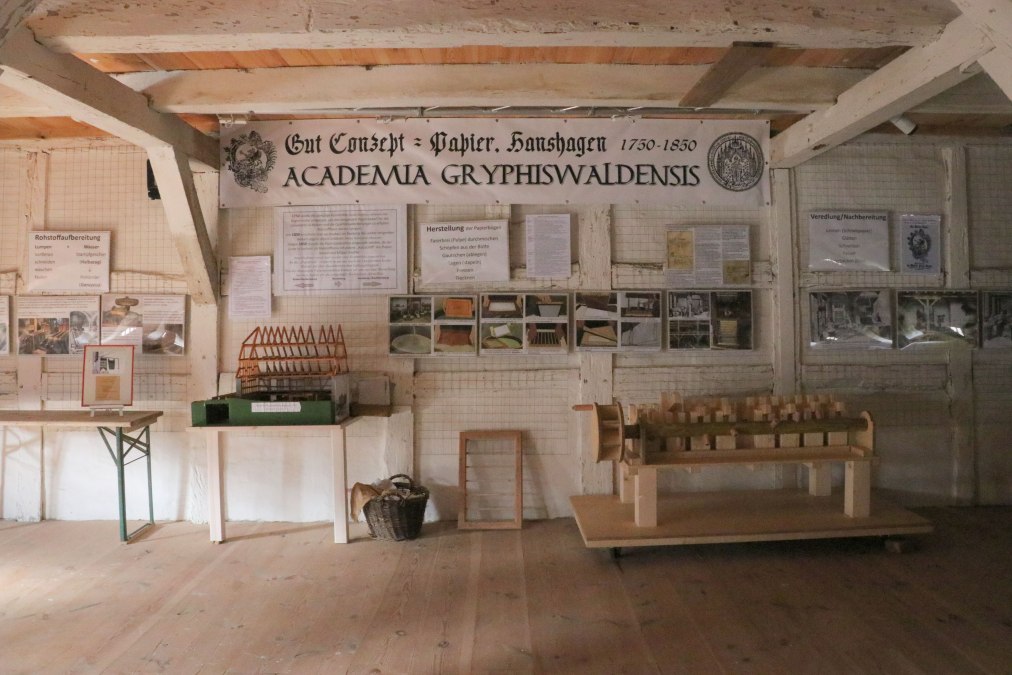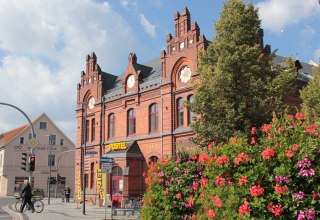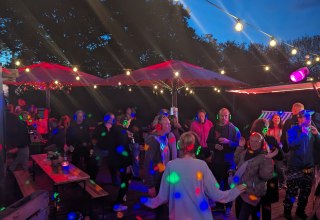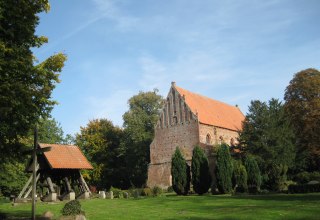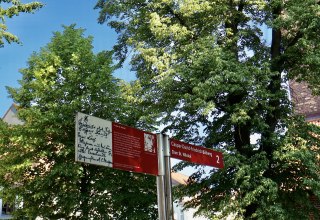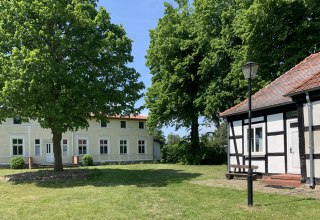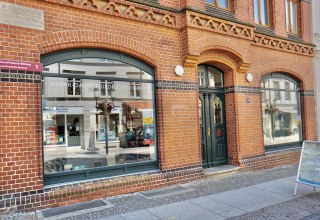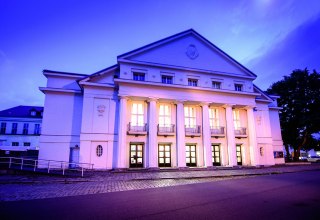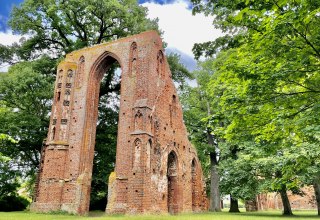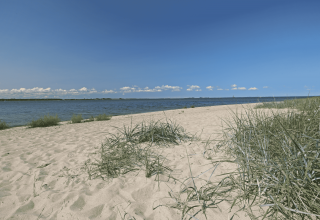The listed Hanshagen watermill is now a fully functioning technical museum. Experience its 500 years of eventful history. Experience it functionally as a corn mill from the mill pond to the grinder; as a paper mill through its architecture and through words, pictures and models.
Water wheels, driven solely by flowing water, were the basis of the world's first complex machines, the mills. Their basic construction, in use since 200 BC, initiated the cultural and historical change from artisanal to industrial production.
The Hanshagen watermill was built in 1524 as a monastic corn mill. As a result of the Reformation, it passed into ducal ownership in 1535. After the Thirty Years' War and following a Swedish edict, it passed to the University of Greifswald in 1654. The university had it converted into a rag paper mill in 1750. Increasing demand for paper led to a new building being constructed next to the old mill building in 1800. However, the invention of wood pulp cellulose made the traditional paper production unprofitable, which is why the building was converted back into a grain mill in 1855. Sold by the university in 1920, it was still in operation until general damage in 1952. It then fell into disrepair, despite being a listed building, until it had to be closed by the building authorities. After the mill was acquired in 2010 and underwent a complex, detailed restoration by Schilling Invest GmbH & Co. KG, it was opened as a technical museum on German Mill Day 2012.
The "Wassermühle Hanshagen e.V." association was founded in 2021 to provide voluntary support for the maintenance of the building and to support people interested in mills
Regularly accessible for video-guided tours and personal guided tours, the fascinating mill technology can be functionally observed and the highly developed miller's trade and its importance for the development of humanity can be traced.

